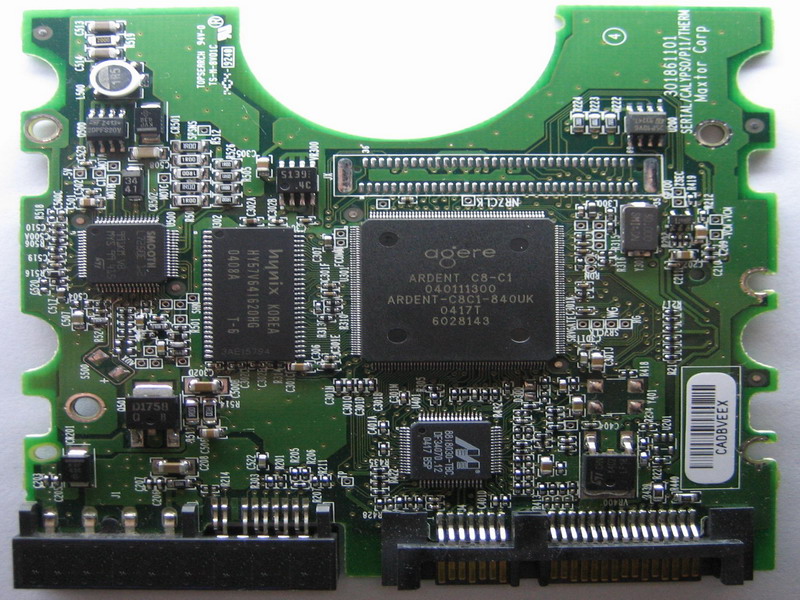The System Unit
Thursday, January 6, 2011
Flash memory
A non-volatile computer storage chip that can be electrically erased and reprogrammed is called a flash memory. It is primarily used in memory cards, USB flash drives, MP3 players and solid-state drives for general storage and transfer of data between computers and other digital products. It is a specific type of EEPROM (electrically erasable programmable read-only memory) that is erased and programmed in large blocks; in early flash the entire chip had to be erased at once.


Graphic cards
It plays an essential role in the PC. It takes the digital information that the computer produces and turns it into something human beings can see. The graphics card on most computers converts digital information to analog information for display on the monitor. On laptops, the data remains digital because laptop displays are digital.

Sound cards
It is an internal computer component that processes audio files in order to provide high-quality playback through computer speakers. It plays voice as well as music files, and can handle various audio file formats including .wav, .mp3 and .cda to name but a few. An interface is available on a typical sound card located at the back of the computer with various input and output ports. The overall sound quality of the computer system is affected by both the quality of the sound card and speakers. Speakers plug directly into the back of the sound card.

Network interface card (NIC)
More commonly referred to as a NIC, it is a device that allows computers to be joined together in a LAN, or local area network. Networked computers communicate with each other using a given protocol or agreed-upon language for transmitting data packets between the different machines, known as nodes. To both send and receive data on the LAN, the network interface card acts as the liaison for the machine.


Plug and play
Refers to the ability of a computer system to automatically configure expansion boards and other devices. You should be able to plug in a device and play with it, without worrying about setting DIP switches, jumpers, and other configuration elements. The Apple Macintosh has been a plug-and-play computer, since the introduction of the NuBus.


Bus line
A collection of wires through which data is transmitted from one part of a computer to another. You can think of a bus as a highway on which data travels within a computer. The term bus usually refers to internal bus, when used in reference to personal computers. This is a bus that connects all the internal computer components to the CPU and main memory. There's also an expansion bus that enables expansion boards to access the CPU and memory.

HDMI
HDMI (High-Definition Multimedia Interface) is an interface standard used for audiovisual equipment such as high-definition television and home theater systems. HDMI is able to carry a bandwidth of 5 Gbps (gigabits per second) with 19 wires wrapped in a single cable that resembles a USB wire. This is more than twice the bandwidth needed to transmit multi-channel audio and video, future-proofing HDMI for some time to come. This and several other factors make HDMI® much more desirable than its predecessors, component video, S-Video and composite video.


Cache memory
It is an extremely fast memory that is built into a computer’s central processing unit (CPU), or located next to it on a separate chip. Cache memory is used in the PC to store instructions that are repeatedly required to run programs, improving overall system speed. The advantage is that the CPU does not have to use the motherboard’s system bus for data transfer. The data transfer speed slows to the motherboard’s capability, whenever data must be passed through the system bus. By avoiding the bottleneck created by the system bus, the CPU can process data much faster .

0 comments: